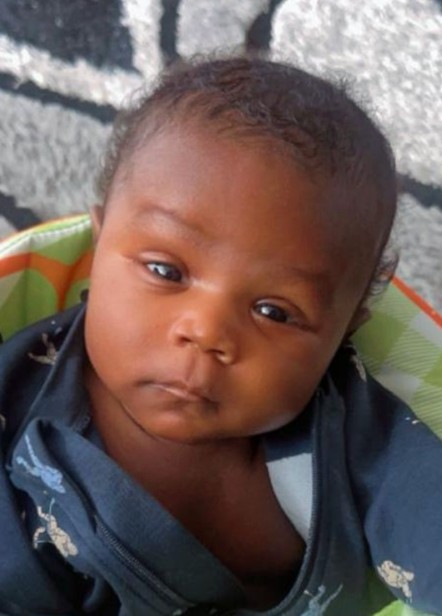How you can help young children in need of first aid, CPR during emergencies
Posted November 28, 2022 6:19 pm.
Last Updated November 28, 2022 7:35 pm.
For Fiona Geddes and her husband, a routine diaper change for their two-year-old daughter at their Toronto home became a parent’s worst nightmare after the mother-of-three was forced to perform CPR.
She said it was on the afternoon of Oct. 27 when her husband discovered their daughter was in medical distress.
“She’s completely limp. She’s not breathing. I rush over and I look at her and she’s turned completely blue. She’s blue, she’s unconscious and she wasn’t responding in any way,” Geddes recalled during an interview with CityNews.
While she performed CPR, her husband called 911. But she said they were put on hold for about 30 seconds.
“My husband holds up his phone and we realize that we’re on hold with 911. So we both look at each other in complete disbelief that we weren’t able to get through to somebody,” Geddes said.
After being unconscious for approximately a minute, she said her daughter became responsive.
“We didn’t get a hold of 911 so we ended up hanging up. It was probably five more minutes before they called back to ask what our emergency was,” Geddes said.
“In the moment it was terrifying. In those moments you always hope that this will never, ever, ever happen that you ever need to call 911 in these emergency situations, but you always expect you’re going to have that backup when you do need them.”
RELATED: Toronto Paramedics 911 centre can face wait times up to 8 minutes due to short-staffing
According to a report issued by Toronto’s auditor general, the Toronto Police Service’s 911 emergency call centre — which is the first point of contact in the city for 911 callers — has a minimum standard of answering 90 per cent of all 911 calls within 15 seconds.
The report found the call centre did not meet the goal between 2018 and 2021 with many callers waiting more than a minute.
CityNews wasn’t able to verify the exact call and wait times and what ultimately happened when Geddes’s husband called. But as CityNews reported in the past, there have been concerns about long wait times on occasion – especially to speak with paramedic call-takers and dispatchers.
A Toronto Paramedics spokesperson declined to speak about the general issue of wait times, current staffing, and other related issues on-camera, but in a statement, they encouraged people to call 911 whenever there is an emergency and to stay on hold until someone answers.
“Toronto Paramedics respond to approximately 300,000 calls for emergency medical service annually. Toronto Paramedic Services becomes aware of 911 medical emergency calls at the time they are transferred to our communications centre from the Toronto Police communications centre,” Dineen Robinson, the service’s acting superintendent for media and public information, wrote in part.
“In 2022, Toronto Paramedic Services has hired 20 call-takers and trained an additional 17 emergency medical dispatchers. We have also hired 200 paramedics to support the community. In addition to calling 911 for serious medical emergencies, Toronto Paramedic Services encourages members of the public to become first aid and CPR trained through a certified provider.”
While Geddes said she’s fortunate to have had infant CPR training, she added many may not. So what should you do if you aren’t trained and come across a young child in need of help?
“The biggest thing is the panic of … it’s their child in distress, so they will automatically go into their fight or flight mechanism. The biggest thing to do is take a deep breath and see what exactly is going on,” Michael Nemeth, a master instructor trainer and volunteer with the Canadian Red Cross, told CityNews on Monday.
“If it’s an infant or a child who is choking on something their body will try and clear with good, strong, forceful coughs. As long as they’re coughing forcefully, still allow them to cough and allow them to continue.”
Nemeth said if the coughs become weak and/or if high-pitched wheezing forms, then intervention is needed.
He first offered advice for children up to one year old, who are prone to ingesting items too big for them such as whole grapes, bits of plastic and toys.
“Good, strong, forceful back blows in combination with good, strong, forceful chest thrusts,” Nemeth said, rotating between back blows and chest trusts.
“The idea is you’re taking all residual air that’s left in the lungs and you’re bellowing it by knocking it up and out to hit that object and to clear it out.”
While he said someone should call 911, he emphasized someone ideally should start working on the child in distress as soon as possible.
“If there’s someone that’s close by, dialling 911 and getting emergency services on the way by all means. If this is someone who is choking right away, give them a try first because the leading cause of cardiac arrest in infants and children is respiratory arrest. And with that, just by doing the back blows and the chest thrusts, you can buy some of that extra time,” Nemeth said.
For children that are responsive, he said to get on the ground and straddle them on your arm, turn them over and while supporting their cheeks.
“In between the shoulder blades, you’re going to do five good back blows and what that’s doing is it’s taking residual air from the lungs and knocking it up to the object … hopefully that object will fall out,” he said.
Nemeth said if that didn’t clear the obstruction (screaming and crying could be an indication it cleared), you would flip the child over while supporting their back and head.
“Between the nipple line, with two fingers I’m going to do five chest thrusts,” he said, noting the compressions will help move residual air from the lungs and to move blood to the brain in an effort to help deliver oxygen to it.
The actions are meant to help buy time in case assistance by medical professionals is needed.
If the child is unresponsive, Nemeth said to check their mouth for any objects while turning their head to the side. If something is present, use a pinky finger to scoop it out.
“Sit them down on the floor, and then what you would do is you find a landmark and you begin your chest compressions and what you’re going to do is 15 chest compressions,” he said.
If an item is still stuck in their throat, he said two ventilations should be attempted.
“On a little person, mouth around the nose and mouth. Just a nice puff in to see if I can get chest rise and fall. Sometimes a couple of things can happen is either the object can stay on top of the epiglottis, sometimes it can actually fall past into one of the lungs and that’s OK because the doctors in the hospital can look after that … or it moves a little bit and can get air in,” Nemeth said.
For children one and above, he said back blows and abdominal thrusts should be used. For chest compressions, you would use an open hand instead of two fingers.
Before the worst happens, he encouraged people to attend a certified first aid and CPR class to ensure they know the proper procedures and to get practice using mannequins.
He also said the free first aid app by the Canadian Red Cross contains detailed instructions for a variety of first aid scenarios and has the ability to call emergency services.
“Prevention is the biggest thing more than anything,” Nemeth said.








